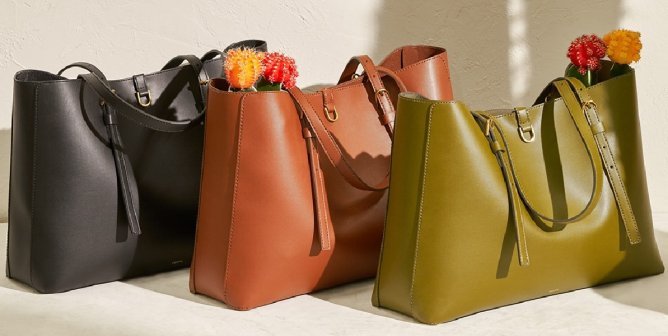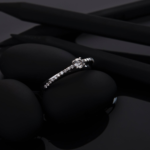Traditional leather for a handbag is rejected by the vegan lifestyle because its main component is animal hide. The process of extracting an animal hide is clearly cruel in that it involves killing an animal and skinning it, but the ethically-minded vegan would also object to the processes used to make genuine leather. Lax regulations in factories put the health of traditional leather-workers at risk because of the necessary tanning processes, which 90% of the time are chrome tanning that uses chemicals risky to the environment and human health, and the depositing of waste water into rivers and lakes. However a common assumption is that anything vegan is environmentally innocent and as we shall see this is demonstrably untrue.
Crossbody bags are the super-comfortable option because of how the weight is evenly distributed across the body. Materials in their manufacture include PU leather, cork, raffia, eco-suede, organic cotton and eco-fi. PVC is another leather substitute but won’t fit comfortably into this vegan remit because it is impossible to recycle. How do they shape up next to genuine leather for durability and texture? Are they guilt-free? Let’s take a look at the materials used in the manufacturing of the vegan bodybag.
PU Leather
Or Polyurethane leather. A synthetic material. Generally a polyurethane coating is applied to a fibre base. It is comparatively low maintenance: unlike genuine leather it can be cleaned with a soft cloth and soap and water, and it will not fade. Some PU is not breathable. It does not easily biodegrade, although it is non-toxic in water, it produces harmful carbon monoxide if burned: not environmentally friendly.
Cork
Gives genuine leather a run for its money in every characteristic, probably it supersedes it. Water repellent, scratch and stain-resistant, easily maintained, it is as flexible, durable and natural as regular leather. It is 100% biodegradable and is harvested in such a way that the cork oak replenishes again and again. It is light to wear and soft to feel.
Raffia
Natural raffia is like a straw material and is soft and durable. It is easy to dye and biodegradable. It would not be the most common material for the vegan body bag, being more suited for the beach bag, or if used for an urban bag, very tightly woven.
Eco suede
Another friendly bio-based alternative to PU leather, it resembles the softness and luxuriousness of suede and uses none of the harmful tanning practices involved in using animal hide. It uses plant-friendly and recycled plastics mainly, in instances where not, it produces microfibers so that it is not 100% environmentally friendly.
Eco-fi
A high-quality polyester fibre made entirely from post-consumer recycled plastic bottles, formerly known as Eco-spun. Using industrial and commercial waste to make vegan materials, it fits the “upcycled” category. It is an uplifting material, in that it gives the customer a hit of joy with the belief that he or she is helping to combat plastic pollution.
Vegan Leather
Vegan leather, also known as scientific leather, is made from microfiber and is a new type of leather from Japan. This type of leather is not only waterproof but most importantly very eco-friendly. Top brands like Borboleta use this type of leather to create their handbags and กระเป๋าสะพายข้าง (shoulder bags).
For the crossbody bag then, as opposed to shoes and clothing where breathability is key, vegan alternatives to leather are successful. While many are not eco-friendly, there are alternatives on the rise that I haven’t mentioned: apple, grape, cactus, pinatek(pineapple) and mushroom leather to name a few. Some other concerns about vegan leather, particularly PU leather, is the strange smell and in other cases thinness comparative to regular leather. These are minor in the case of a crossbody bag I would argue, and are countered by the relative cheapness and durability of many of these alternatives.
Some bags have detachable straps allowing the switch from a top-handle bag to a crossbody bag with the substitution of a longer strap.













